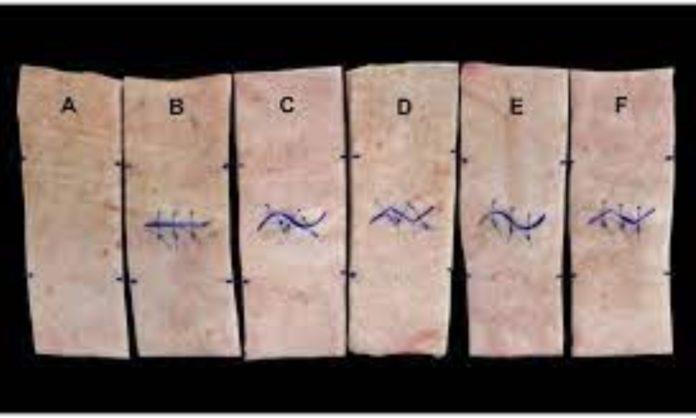We all know that we hate surgeries and we hate the scars even more. But what if I tell you that scientists may have found a way to faster and scar-free healing by making zig-zag incisions instead of straight ones? Yes, it’s true! A zig-zag cut can help reduce scar tissue than a straight cut. A bunch of Singaporean scientists have come up with a theory that zig-zag incisions have some sort of effect on the healing cells and help with reducing the appearance of scars in the future.

Here’s How Scientists Found Out
Researchers from Nanyang Technological University, Singapore (NTU Singapore) have conducted an inquiry into the differences between two surgical techniques, leading to potential advancements in surgical incisions.
The study involved monitoring the healing of simulated wounds in biosynthetic materials over a span of 64 hours. Surprisingly, it was discovered that wavy gaps healed almost five times faster than their straight-edged counterparts. This discrepancy in healing rates was attributed to variations in the movement pathways of the cells involved.
According to K Jimmy Hsia, a mechanical engineer at NTU Singapore, it has long been recognized that the manner in which skin is incised can impact the speed of its healing. Nevertheless, the underlying reasons behind this phenomenon and the factors influencing healing rates remain largely unexplored. Here have a look at the video for a better demonstration.
Watch this video
To deepen scientists’ comprehension of the details involved in wound healing processes, Hsia and his team conducted experiments on Madin-Darby canine kidney (MDCK) cells. They observed how these cells closed gaps in wounds created through cuts on synthetic skin made from a micropatterned hydrogel. By investigating the behavior of these cells, the researchers aimed to shed light on the mechanisms at play during the healing process and uncover any insights that could potentially enhance surgical techniques and improve healing outcomes.
Summary
In summary, the investigation carried out by the NTU Singapore researchers has illuminated cellular discrepancies between two surgical methods. The faster healing observed in wavy gaps, compared to straight-edged gaps, indicates a divergence in the movement pathways of cells involved in wound closure. This study contributes to the growing body of knowledge surrounding wound healing processes and holds promise for the development of more effective surgical procedures.
So are you going to be asking your doctor for zig-zag cuts from now on? Let us know in the comments below.
Stay tuned to Brandsynario for more news and updates.







































